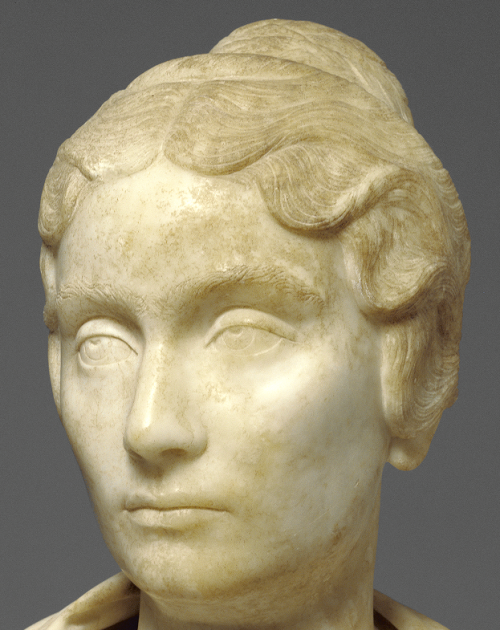ancientpeoples:Portrait bust of a womanRome or Lazio, Italy, 150 - 160ADAlthough the woman shown in
ancientpeoples:Portrait bust of a womanRome or Lazio, Italy, 150 - 160ADAlthough the woman shown in this Roman portrait bust cannot be identified, stylistic features reveal when and where she was made. Her hairstyle copies one worn by the Empress Faustina, the wife of the emperor Antoninus Pius, who reigned from A.D. 138 to 161. The highly polished surface of the bust also signals an Antonine date for its creation. Portraits of the imperial family defined high style and fashion, setting the standards for private portraiture of the social elite. This woman appears to be of mature years, yet she displays no physical signs of aging. Roman portraits of women tend to be more idealized and less individualized than those of men. The political or social message that a portrait conveyed was as important as its actual resemblance to the person portrayed. For this reason, portraits of Roman women often are concerned more with representing the latest ideas of fashion and beauty than they are with depicting actual features. Source: The J. Paul Getty Museum -- source link
Tumblr Blog : ancientpeoples.tumblr.com
#roman#sculpture

